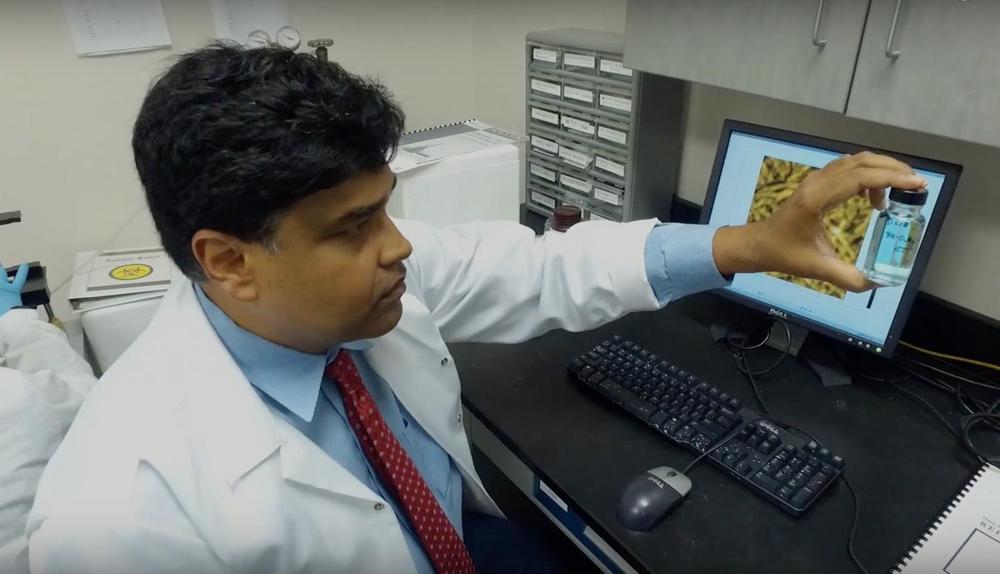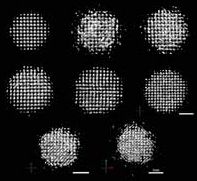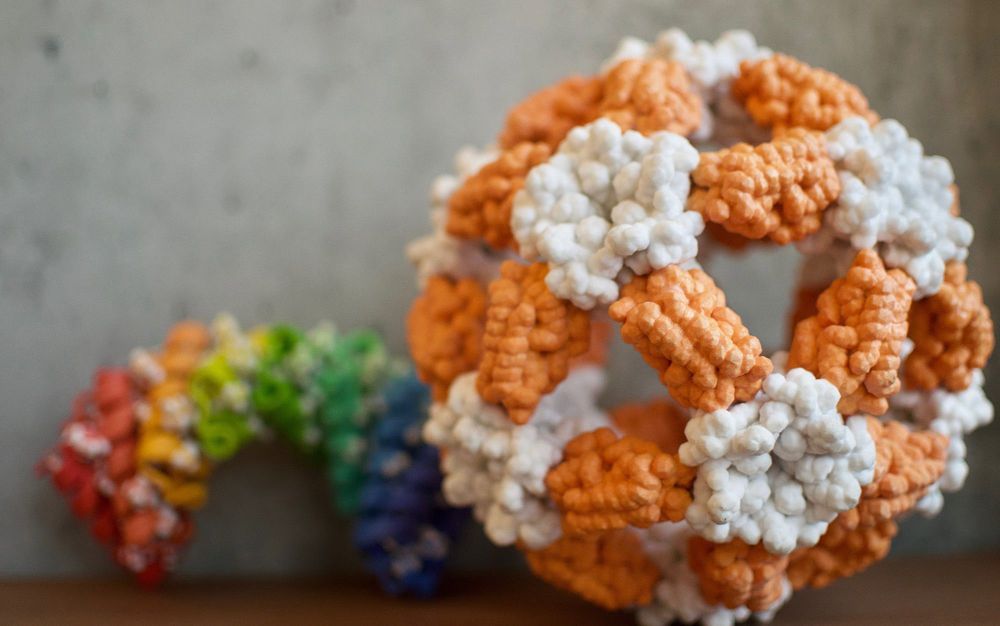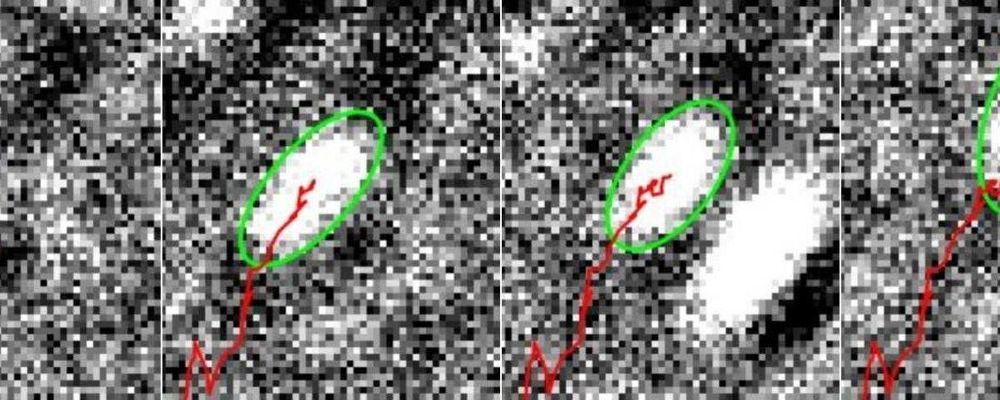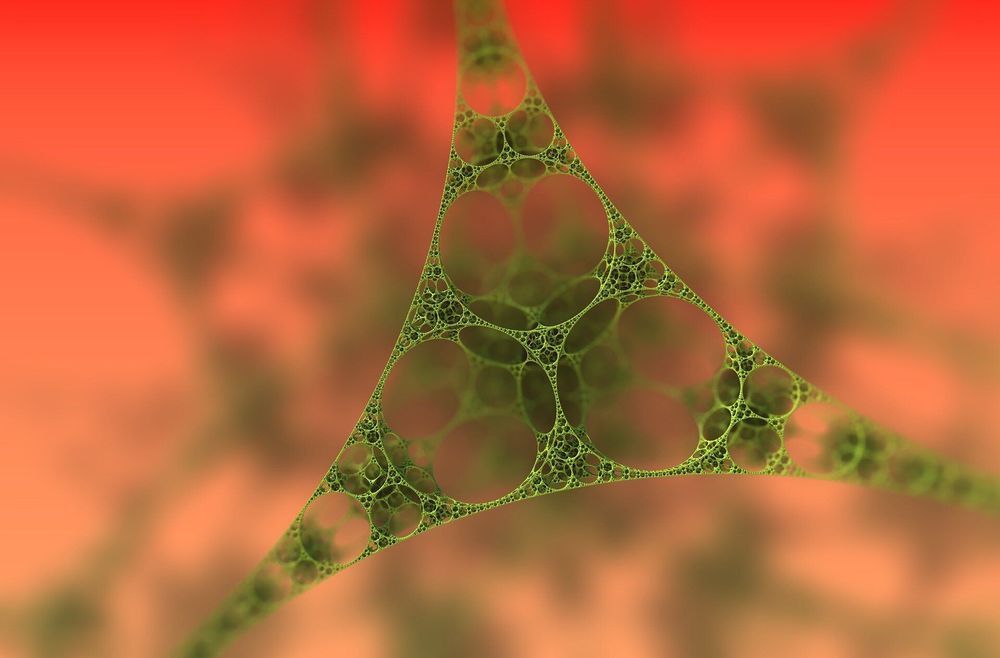Archive for the ‘nanotechnology’ category: Page 201
Apr 10, 2020
Coating That Could Destroy COVID-19 Virus, for Use in Hospital Masks, in Development
Posted by Omuterema Akhahenda in categories: biotech/medical, health, nanotechnology
Researchers at the University of Central Florida (UCF) are working to create a protective coating that would include a new nanomaterial to catch #COVID19 and kill it within seconds.
ORLANDO, Fla., April 10, 2020 — The masks that health care workers wear to protect them from the virus that causes COVID-19 block the virus before it reaches their faces, but do not destroy it. To further protect doctors, nurses, and others on the front lines of the pandemic, researchers at the University of Central Florida (UCF) are working to create a protective coating that would include a new nanomaterial to catch the virus and kill it within seconds.
Apr 10, 2020
Scientists capture 3D images of nanoparticles, atom
Posted by Quinn Sena in categories: nanotechnology, particle physics
O,.,o.
Since their invention in the 1930s, electron microscopes have helped scientists peer into the atomic structure of ordinary materials like steel, and even exotic graphene. But despite these advances, such imaging techniques cannot precisely map out the 3D atomic structure of materials in a liquid solution, such as a catalyst in a hydrogen fuel cell, or the electrolytes in your car’s battery.
Now, researchers at Berkeley Lab, in collaboration with the Institute for Basic Science in South Korea, Monash University in Australia, and UC Berkeley, have developed a technique that produces atomic-scale 3D images of nanoparticles tumbling in liquid between sheets of graphene, the thinnest material possible.
Continue reading “Scientists capture 3D images of nanoparticles, atom” »
Apr 10, 2020
The future is nano, and it will revolutionise medical science Essays
Posted by Mike Diverde in categories: bioengineering, biotech/medical, computing, nanotechnology, science
If you’ve been interested in nanotech, but have been too afraid to ask, here is an introductory and interesting article that I’d like to recommend.
My interest in nanotech is based on my hope that nanotech can lead to methods of constructing substrates that are suitable for mind uploading. It may lead to a technique to create duplicate minds.
“These ‘biological engineering’ technologies have made real one of the dreams of the nanotechnology pioneers: the deployment of molecular assemblers able to construct any shape with atomic precision, following a rational design.”
Continue reading “The future is nano, and it will revolutionise medical science Essays” »
Apr 9, 2020
Engineer uses metal-oxide nanomaterials deposited on cloth to wipe out microbes
Posted by Quinn Sena in categories: biological, chemistry, engineering, health, nanotechnology, sustainability
In an effort to make highly sensitive sensors to measure sugar and other vital signs of human health, Iowa State University’s Sonal Padalkar figured out how to deposit nanomaterials on cloth and paper.
Feedback from a peer-reviewed paper published by ACS Sustainable Chemistry and Engineering describing her new fabrication technology mentioned the metal-oxide nanomaterials the assistant professor of mechanical engineering was working with—including zinc oxide, cerium oxide and copper oxide, all at scales down to billionths of a meter—also have antimicrobial properties.
“I might as well see if I can do something else with this technology,” Padalkar said. “And that’s how I started studying antimicrobial uses.”
Apr 9, 2020
Technology in medicine: What will the future healthcare be like?
Posted by Neurozo Huang in categories: 3D printing, augmented reality, biotech/medical, bitcoin, drones, internet, nanotechnology, robotics/AI, virtual reality, wearables
#Technology in #medicine: What will the #future #healthcare be like? https://www.neurozo-innovation.com/post/future-health Technologies have made many great impacts on our medical system in recent years. The article will first give a thorough summarization of them, and then the expectations and potential problems regarding future healthcare will be discussed. #AI #5G #VR #AR #MR #3DPrinting #BrainComputerInterface #telemedicine #nanotechnology #drones #SelfDriving #blockchain #robotics #innovation #trend
Technology has many beneficial effects on modern people’s lives, and one of them is to prolong our lifespan through advancing the medical field. In the past few years, new techniques such as artificial intelligence, robots, wearable tech, and so on have been used to improve the quality of our healthcare system, and some even newer innovations such as flying vehicles and brain computer interface are also considered valuable to the field. In this article, we will first give a thorough discussion about how these new technologies will shape our future healthcare, and then some upcoming problems that we may soon face will be addressed.
Apr 8, 2020
Cell muscle movements visualised for first time
Posted by Genevieve Klien in categories: materials, nanotechnology
The movements of cell muscles in the form of tiny filaments of proteins have been visualised at unprecedented detail by University of Warwick scientists.
In a study published in the Biophysical Journal, scientists from the University’s Department of Physics and Warwick Medical School have used a new microscopy technique to analyse the molecular motors inside cells that allow them to move and reshape themselves, potentially providing new insights that could inform the development of new smart materials.
Myosin is a protein that forms the motor filaments that give a cell stability and are involved in remodelling the actin cortex inside the cell. The actin cortex is much like the backbone of the cell and gives it its shape, while the myosin filaments are similar to muscles. By ‘flexing’, they enable the cell to exert forces outside of it and to propagate.
Apr 8, 2020
Researchers use nanotechnology to develop new treatment for endometriosis
Posted by Genevieve Klien in category: nanotechnology
Scientists have developed a precise, nanotechnology-based treatment to alleviate the pain and fertility problems associated with endometriosis, a common gynecological condition in women of childbearing age.
Research led by Oleh Taratula of the Oregon State University College of Pharmacy and Ov Slayden of the Oregon National Primate Research Center at Oregon Health & Science University used photo-responsive nanoparticles loaded with dye to find and remove the lesions associated with the disorder.
Findings were published today in the journal Small.
Apr 7, 2020
New Nanocrystal Transforms Regular Glasses Into Night Vision Specs
Posted by Quinn Sena in category: nanotechnology
:oooo.
A single nanoparticle is just 300 nanometers wide, but an array of them create what’s called a metamaterial with superior capabilities. Researchers used this tech to create better night vision goggles powered by nanocrystals, which can convert photons of infrared light into visible light.
Apr 7, 2020
Bloodshot: Based on the bestselling comic book
Posted by Quinn Sena in categories: entertainment, nanotechnology

Vin Diesel stars as Ray Garrison, a soldier recently killed in action and brought back to life as the superhero Bloodshot by the RST corporation. With an army of nanotechnology in his veins, he’s an unstoppable force –stronger than ever and able to heal instantly. But in controlling his body, the company has sway over his mind and memories, too. Now, Ray doesn’t know what’s real and what’s not – but he’s on a mission to find out.
